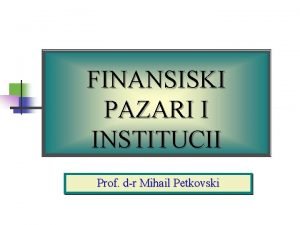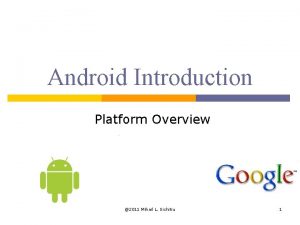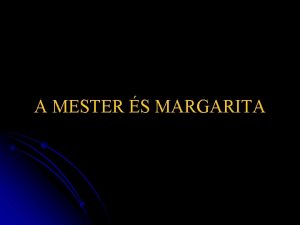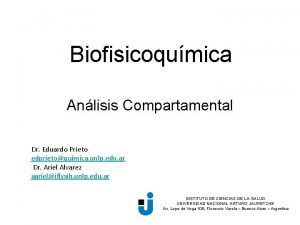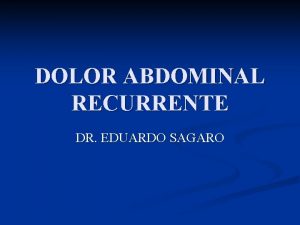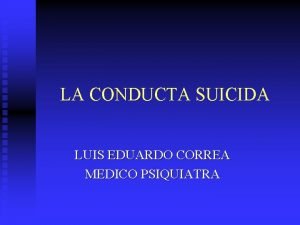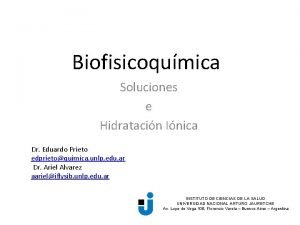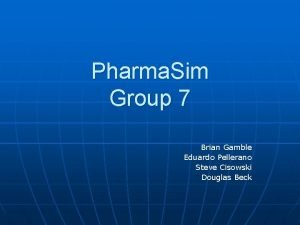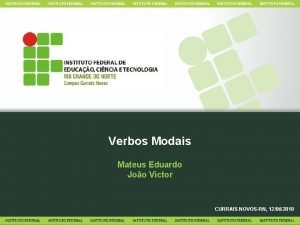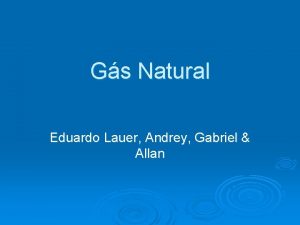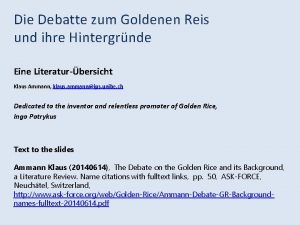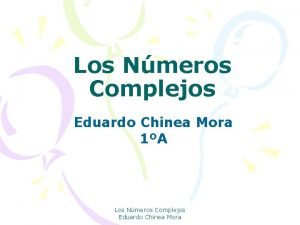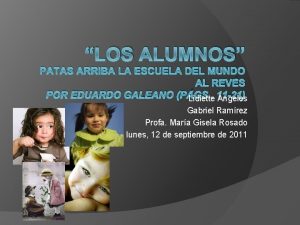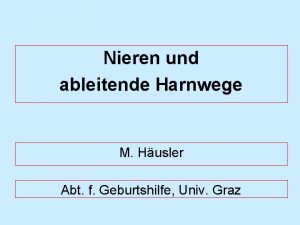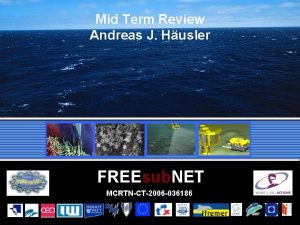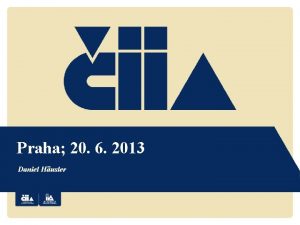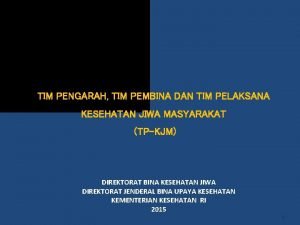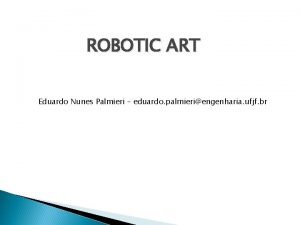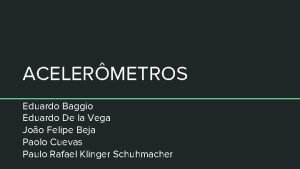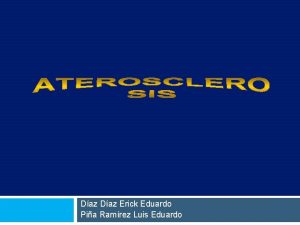USTEC Tim FullerRowell Eduardo AraujoPradere Mike Husler Mihail


















- Slides: 18

US-TEC Tim Fuller-Rowell, Eduardo Araujo-Pradere, Mike Husler, Mihail Codrescu NOAA Space Weather Prediction Center and CIRES University of Colorado October 24 th 2007 NOAA GPS Workshop

US-TEC Target Users: • Positioning and Navigation community • Collaboration between SWPC, NGS, FSL, and NGDC • Kalman filter over CONUS + ground-based GPS data, IRI background model, solve for receiver biases • 15 -minute cadence • 15 to 30 minute latency • 2 - 3 TEC unit accuracy (~34 48 cm delay at L 1 frequencies) October 24 th 2007 NOAA GPS Workshop

Product on Web page: http: //www. swpc. noaa. gov/ustec/ http: //www. sec. noaa. gov/ustec Vertical TEC map over CONUS updated every 15 • minutes Estimated uncertainty in TEC Location of current data sites Difference from 10 -day average to show recent trend Data files: a) vertical TEC b) slant path TEC for each GPS satellite in view • • recent trend uncertainty October 24 th 2007 NOAA GPS Workshop

US-TEC Data Sources • NDGPS Coast Guard stations including inland sites via CORS/NGDC - dual data feed for reliability • GPS/MET sites ESRL Seth Gutman • IGS stations over Canada October 24 th 2007 NOAA GPS Workshop

Situational awareness: TEC Gradients Use information on TEC gradients to estimate time interval needed to record dual-frequency GPS data to achieve cm level positioning accuracy quiet ionospheric conditions small gradients, shorter intervals October 24 th 2007 disturbed ionospheric conditions - steeper gradients, longer intervals NOAA GPS Workshop

Slant-Path TEC Maps 2 -D maps of of slant path TEC over the CONUS for each GPS satellite in view updated every 15 minutes Sat. 1 A B C Sat. 14 A B C A Sat. 5 B C Sat. 29 C Applications: C …. etc 1. Ionospheric correction for single frequency GPS 2. Support dual-frequency integer ambiguity resolution for more rapid decimeter and centimeter accuracy positioning October 24 th 2007 NOAA GPS Workshop

Differential Code and Phase October 24 th 2007 NOAA GPS Workshop

Kalman Filter Project state, x Project error covariance, P Compute Kalman gain, K, for observation matrix, H Update state estimate with observations, z Update error covariance October 24 th 2007 NOAA GPS Workshop

Empirical ortho-normal mapping functions h EOF 2 EOF 1 EOF 3 Electron density October 24 th 2007 NOAA GPS Workshop

Inclusion of time evolution terms Significant ( 1 TECU ) changes in the ionosphere can occur over 4 minutes Include terms in the state vector, x, for linear time changes Append terms to the observation matrix, H, Solving for time also allows extended data windows ( 1 hour) October 24 th 2007 NOAA GPS Workshop

October 24 th 2007 NOAA GPS Workshop

“Differential” Validation • Integrate through USTEC model at two different times. • Compare directly to the phase difference in the original RINEX data file. • As time separation increases, errors in US -TEC map become uncorrelated and approach true uncertainty. October 24 th 2007 NOAA GPS Workshop Araujo-Pradere et al. 2006

US-TEC “Differential” Validation Slant path RMSE IRI US-TEC • Validation stations not included in assimilation process • Build up statistics every 5 th day over 6 months • Daily average RMSE for each site October 24 th 2007 NOAA GPS Workshop

Validation Statistics: “differential” TEC 2. 4 TEC units October 24 th 2007 NOAA GPS Workshop

Absolute validation: FORTE Fast Onboard Recording of Transient Events satellite (Los Alamos, Abe Jacobson) –bending of the rays, –plasmaspheric content, and having to sub-sample US-TEC vertical domain October 24 th 2007 Phase or arrival time as function of frequency Separate O and X traces Fit to k/f 2 dependence provides TEC estimate Frequency • Broad-band RF receiver 30 -300 MHz at 800 km altitude • Designed to monitor lightning • Pulse transmitted from Los Alamos (simulated lightning) • Possible to estimate line-of-sight TEC between transmitter and FORTE satellite • Broad-band signal/receiver eliminates phase ambiguity so produces an “absolute” TEC estimate (uncertainty estimate is about 1 to 2 TEC units) • Issues are • • • Time of arrival NOAA GPS Workshop

Comparison of FORTE and US-TEC October 24 th 2007 NOAA GPS Workshop

US-TEC Validation Summary Differential TEC: Slant = 2. 4 TEC units Vertical = 1. 7 TEC units “Absolute” FORTE ray tracing: Slant = 2. 7 TEC units Vertical = 1. 9 TEC units • Estimated US-TEC slant path total electron content uncertainty < 3 TEC units (equivalent to about 45 cm of signal delay at L 1 frequencies) • Estimate US-TEC vertical total electron content uncertainty < 2 TEC units (equivalent to about 30 cm of signal delay at L 1 frequencies) October 24 th 2007 NOAA GPS Workshop

US-TEC Future Plans…. • Add FAA and other stations over CONUS and Mexico • Short-term forecast (15 to 60 minutes) to bring up to, or just beyond, real-time • TEC gradients - situational awareness • Increase cadence to 5 minutes during storms • Develop multi-regional capability - partnerships • Global capability - ISES • Longer-term forecast - combining terrestrial and space weather October 24 th 2007 NOAA GPS Workshop
 Dr mihail pautov la maruta
Dr mihail pautov la maruta Mihail sichitiu
Mihail sichitiu Mihail petkovski
Mihail petkovski Mihail sichitiu
Mihail sichitiu Mefisztó és margarita kettős szobra
Mefisztó és margarita kettős szobra Dr eduardo palmieri
Dr eduardo palmieri Eduardo sagaro
Eduardo sagaro Escala de patterson
Escala de patterson Nexopia
Nexopia Eduardo daro
Eduardo daro Eduardo prieto santos
Eduardo prieto santos Http //www.starremedies.com/privacy/
Http //www.starremedies.com/privacy/ Canadiense delgada enamorado lista enojada
Canadiense delgada enamorado lista enojada Invariáveis
Invariáveis Eduardo lauer
Eduardo lauer Eduardo chavarria psiquiatra
Eduardo chavarria psiquiatra Eduardo kac alba rabbit
Eduardo kac alba rabbit Eduardo chinea
Eduardo chinea Los alumnos galeano
Los alumnos galeano


